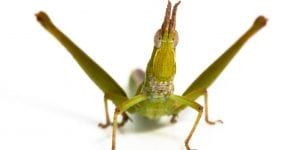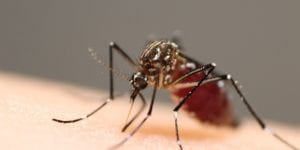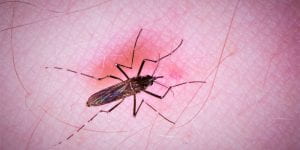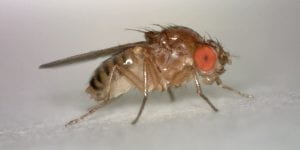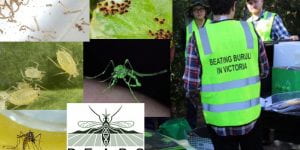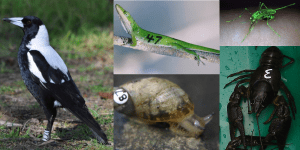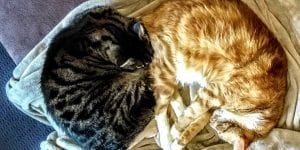Category: Blog
-
Finding “Nosy Tiger’s” and other oddly named freshwater invertebrates
Words – Eddie Tsrline Images – Eddie Tsyrlin and John Gooderham Towbiters, water scorpions and Nosy Tigers. These are just some the colourful names given to freshwater insects and other invertebrates. And there is a more serious side to these quirky creatures. The Nosy Tigers are a diving beetle larva with a peculiarly elongated head. […] -
Rediscovering a ‘lost’ species
This article was first published on Pursuit. Read the original article. Associate Professor Michael Kearney and Professor Ary Hoffmann People usually go to cemeteries to visit or bury their dead but, in the name of research, we visited 25 cemeteries in Victoria, NSW and the ACT to try and find a tiny rare species of […]blogs.unimelb.edu.au/pearg/2019/09/19/rediscovering-a-lost-species
-
Releases of Wolbachia-infected mosquitoes for disease control
Words and images: Perran Ross When animals raised in captivity are released back into the wild, you might picture cute and furry mammals from an endangered species. But in many countries around the world, people are releasing mosquitoes raised in laboratories into the environment. These mosquitoes feed on human blood and are vectors of dengue, […]blogs.unimelb.edu.au/pearg/2019/09/18/releases-of-wolbachia-infected-mosquitoes-for-disease-control
-
Using bacteria to control mosquitoes Dr Tom Schmidt and Professor Ary Hoffmann “This article was first published on Pursuit. Read the original article.” Living inside the cells of insects is a type of bacteria that is looking increasingly like the key to controlling the spread of dengue fever, the Zika virus and other mosquito-borne diseases. […]
-
Using genomics to determine the adaptive potential of populations
Words: Ary Hoffmann One of the central tenets of conservation biology is that high levels of genetic variation in natural populations is important for their long-term survival. High levels of variation allow populations to adapt to changing environments through evolution. This process is now recognised as being extremely fast when selection pressures are high. In […] -
MSc projects 2020 – Students wanted
We are seeking motivated MSc students to apply for several projects starting next year. Enquiries via pearg-queries@unimelb.edu.au Project 1/4: Exploring bacterial symbionts for agricultural pest control PEARG is researching ways to control important agricultural pests such as aphids and mites that cause millions of dollars in damage to crops each year in Australia. This project […]blogs.unimelb.edu.au/pearg/2019/06/14/msc-projects-2020-students-wanted
-
Cracking the kinship code: Measuring animal dispersal across generations with DNA
NEW paper! Dispersal is a key component of the ecology and evolution of animal populations. It allows animals to colonize new habitats, escape deteriorating conditions, and locate mates. When animals disperse and breed successfully in new habitats that are already occupied by the same species, there will be an exchange of genes. This exchange is […] -
Stowaway mozzies enter Australia from Asian holiday spots – and they’re resistant to insecticides
Original article published on The Conversation Words: Tom Schmidt, Andrew Weeks, and Ary Hoffmann We might not be able to use common insecticides to kill mosquitoes that arrive from other countries. from www.shutterstock.com Planning a trip to the tropics? You might end up bringing home more than just a tan and a towel. Our latest […] -
Collecting Rhynchosciara: an important fly in the history of genetics
Words and images: Ann Stocker Rhynchosciara species are endemic to South and Central America. The larvae are readily observed because they are a centimeter or more in length, usually reddish in colour and travel in groups of dozens to hundreds of individuals (Fig 1). However, they only came to the attention of biologists after Crodowaldo […] -
A cat-astrophe waiting to happen!!!
Words: Samantha Ward Friend or foe? When you look at your fluffy pet cat curled up beside you on the sofa, do you see a cute companion or a calculating killer? Cute companion or calculating killer? Credit: Author’s own. I’m going to assume the former, but now let me ask you this: Do you let […]blogs.unimelb.edu.au/pearg/2018/11/01/a-cat-astrophe-waiting-to-happen
Number of posts found: 79

